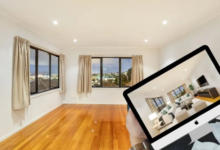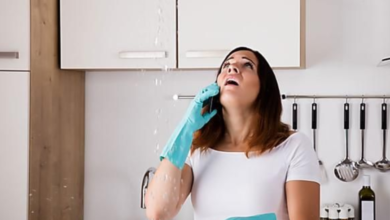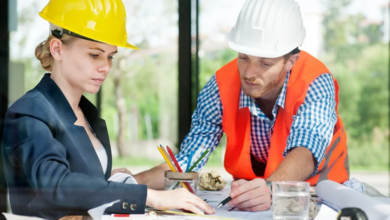Turf Care for Allergy Relief: What Makes Artificial Grass Better for Sensitive Homes

Allergies can be sneaky. They often start right under your feet. Grass looks nice, but can cause problems. It has pollen and bugs that make you sneeze and itch. Kids playing on it might feel bad too. They’re the first to feel it. That’s why some families are turning away from traditional lawns.
The Allergen-Free Advantage of Artificial Grass
Here’s a change of pace: artificial grass doesn’t grow. That means no pollen, no plant dust, and no shedding. It’s made from fake fibers like nylon or plastic. These don’t trap things that cause allergies. If you have hay fever or asthma, this helps a lot. And since you don’t need to mow or trim, you won’t be breathing in stuff from the grass. Take a quick break and check out the latest online casino games for a chance to win with the bonus rounds.
One Family’s Story
Take Jenna, a mom in Phoenix. Her two boys loved soccer, but her youngest had severe grass allergies. Every afternoon ended in coughing and rashes. She replaced the backyard turf with artificial grass. Within weeks, the attacks dropped. “It’s not just about looks,” she said. “It changed how my son enjoys his time outside.” This isn’t a rare story. It’s a growing trend.
Cleaning Is Key
Natural lawns hold on to allergens like a sponge. Leaves fall. Grass clippings rot. Moisture settles in. Fake grass is easy to clean. Just spray it with a hose to wash away dust and pollen. If allergies are bad, you can use soap and water. The flat surface doesn’t hold much dirt.
Less Maintenance, Fewer Triggers
Mowing, weeding, fertilizing- these are common lawn tasks. They kick up pollen and mold. Fertilizers and weed killers can also irritate sensitive lungs. With artificial grass, there’s none of that. No lawn tools needed. No chemicals to worry about. That’s less exposure for allergy-prone folks. And less stress for everyone else.
Design with Comfort in Mind
Fake grass today looks and feels like real grass. You can make it softer with padding underneath. That’s good for kids and pets. Some types also stay cooler in the sun because they block UV rays. Need a shady spot that doesn’t get dusty? Turf can help with that too. Artificial turf handles that, too. It gives more control over the environment.
Pet Owners Take Note
Pets can bring allergens indoors. If they roll around in natural grass, they carry pollen, dirt, and bugs inside. Artificial turf reduces that transfer. It doesn’t get muddy. It doesn’t create bare spots. And it’s easy to clean up after a pet. Many turf products even have drainage layers to flush away urine and water. That means a cleaner yard, and cleaner air indoors.
What About Mold and Mildew?
You might wonder, does artificial turf get moldy? It can, but it’s rare, especially with proper drainage and sun exposure. Most turf systems are designed to let water drain fast. That means fewer damp spots where mold could grow. Plus, many types have anti-microbial backing. That’s an extra layer of protection for sensitive households.
Schoolyards and Parks Are Catching On
It’s not just homes making the switch. Many schools and public spaces now use artificial grass in play areas. Kids run, roll, and fall on it daily. The reduced allergens help students with breathing issues. Maintenance teams like it too.
Environmental Concerns Addressed
One common question is, “Is artificial turf eco-friendly?” The answer depends. Yes, it uses plastic. But it also saves water, thousands of gallons per year per yard. No fertilizers. No gasoline from mowers. Some companies even offer recycled turf or recyclable options.
Choosing the Right Type of Turf
Not all artificial grasses are the same. Some are designed for looks, others for performance. For allergy-sensitive homes, it’s best to choose turf with:
- Low pile height (easier to clean)
- Anti-microbial backing
- UV resistance
- Drainage layers
Talk to a turf specialist about your specific needs. Some turf even comes with certifications for indoor air quality and allergen safety.
Cost vs. Benefit
Yes, the upfront cost of artificial turf can be high. Installation might run $8 to $15 per square foot. But the long-term savings add up. No more lawn treatments. No water bills for sprinklers. No replacing patches every spring. And if it brings relief to someone in your family? That’s worth more than money.
Myth-Busting: Is It Too Hot?
One concern about turf is that it gets hot in the sun. That’s true, some surfaces do. But new technology has improved this. Some turfs reflect heat or come with built-in cooling agents. Others can be shaded with awnings or trees. A light spray of water can drop the temperature fast. So don’t let the heat scare you away.
Installation Tips for Allergy-Focused Yards
If you’re going all-in on allergy relief, install turf with a weed barrier. This prevents natural plants from sneaking through. Add a layer of crushed rock for drainage. Make sure installers leave no gaps where mold can settle. And clean it regularly. That keeps allergens at bay and extends the life of your turf.





